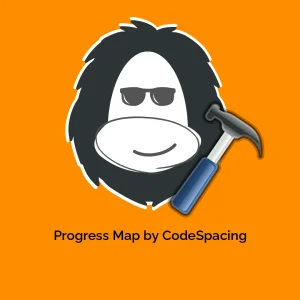Unleashing the Power of FacetWP Conditional Logic
In the digital landscape, being able to tailor user experiences is paramount for engagement and satisfaction. One of the most effective ways to do this in WordPress is through FacetWP Conditional Logic. This powerful add-on allows developers and site owners to manipulate facets based on specific rules, thereby creating a responsive and interactive interface that meets users’ needs dynamically.
Understanding FacetWP Conditional Logic
Essentially, FacetWP Conditional Logic enables you to set rules that dictate when facets (the filtering options on your site) and other elements on your webpage should be displayed or hidden based on user actions. This flexibility can greatly enhance the browsing experience by providing relevant filtering options that change with user interactions.
Creating Rulesets
At the heart of FacetWP Conditional Logic lies the concept of rulesets. A ruleset consists of conditions (what to check for) and actions (what happens when those conditions are met). To initiate the creation of a ruleset, you simply click the “Add Ruleset” button, which subsequently generates a new, empty ruleset at the bottom of your existing ones. Each ruleset is structured in a way that it can include:
- One or more conditions (IF): These operations check for specific scenarios.
- One or more actions (THEN): These dictate what should happen if the conditions are true.
- An ELSE setting: This configuration defines what action to take when the conditions are not satisfied, allowing for a more comprehensive handling of user interactions.
Here’s how a typical ruleset could be visualized in pseudo-code:
if ( condition#1 === true AND / OR condition#2 === true ) {
do action#1 AND do action#2
} else {
do the opposite / do nothing
}
The Importance of Order
When implementing FacetWP Conditional Logic, it’s vital to remember that rulesets are evaluated in the order in which they appear on the page. This sequence can visually be managed simply by dragging and dropping the rulesets with a handy interface. Due to this ordering, one ruleset can potentially override another’s logic, which may lead to unexpected outcomes. For instance, if you combine different rulesets with “Do the opposite” settings, it could produce conflicting results if not ordered correctly.
Managing Rulesets
Rulesets are, by default, enabled upon creation. However, you may find situations where a ruleset needs to be temporarily disabled without losing its configurations. This can be done with a simple unchecking of a box and saving the changes. For scenarios where a ruleset is no longer needed, removing it entirely is also straightforward—just click the red “x” in the corner.
Naming and Organizing Your Rulesets
Effective management of your rulesets involves giving each one a descriptive name. This makes identifying their functions easier as your configuration grows. After selecting a name, don’t forget to hit “Save Changes” to keep your adjustments intact!
Deep Dive into Conditions
The conditions you set in FacetWP Conditional Logic are pivotal; they determine when your specified actions should occur. You can choose basic conditions or combine multiple conditions using logical operators such as AND or OR. If a ruleset doesn’t have any conditions, its actions will apply under all circumstances, which could be handy but may also lead to a lack of specificity.
Adding Conditions
To include a condition, you simply click on the “Add Condition” button. For example, if you want an action to take place on a specified page (say yoursite.com/demo/cars/) when the “Make” facet shows a “BMW” selection, you would set the condition accordingly. It’s crucial to utilize the technical value of the facet choice rather than its display value to ensure the condition functions as intended.
Combining Multiple Conditions
Combining conditions enhances the ability of your site to respond to complex user interactions. You may chain together multiple conditions using the AND logic for more specific setups or OR logic for broader scenarios. Here’s an example for further clarity:
- AND Logic: The ruleset only applies when both conditions are satisfied.
- OR Logic: The action is triggered if any one of the conditions is met.
Available Conditions
Here are some of the potent options you can leverage within your conditions:
- Basic: Simple conditions based on true or false states.
- No facets in use: Checking if no facets are currently active.
- Some facets in use: Validates if at least one facet is active.
- Page URI: Targets specific pages based on the URI, which must be formatted correctly.
- Result count: A numeric check on the number of results in a post listing.
- Facet Value: This checks if particular facets are selected by users, which can incorporate multiple values using OR logic.
For Page URI, you have to be cautious with its implementation. The Page URI is not the full URL but rather everything that comes after your domain name, without leading or trailing slashes. This can be a bit tricky, especially if you’re targeting the homepage or dealing with encoded characters in a multi-language setup.
Wildcards and Body Classes
Using wildcards such as * can also be beneficial. For instance, you could employ it to generalize conditions across various page types. Additionally, instead of just focusing on Page URIs, you could target pages using their body classes, enhancing the specificity of your rules.
Putting Everything Together with Custom fUtil Code
After you’ve set the conditions and crafted your rulesets, you may want to take a step further by using custom fUtil code, a JavaScript library that comes integrated with FacetWP. This can add advanced interactivity right into your theme’s JavaScript file. If you feel adventurous, trying to enhance user interactivity through your coding skills can yield remarkable results.
In conclusion, FacetWP Conditional Logic is a powerful tool for any WordPress website focusing on user experience. It permits intricate filtering and control over facets based on user interactions, all thanks to its intuitive rulesets and conditions. With the information detailed above, users—from novices to advanced web developers—can leverage this add-on to deploy a seamless, tailored browsing experience that meets specific needs effectively. Whether you’re looking to enhance product listings or tailor search results, implement FacetWP Conditional Logic for a more engaging and responsive website.
FacetWP – Conditional Logic: Download it for Free
Here it is, is absolutely possible and legal.
Actually, even downloading a cracked FacetWP – Conditional Logic is law-abiding, and this is because the license it is distributed under is the General Public License, and this license allows the user its free modification and resale.
This way, there’s no need to worry: If you were in search of to buy FacetWP – Conditional Logic cheaply or, directly, to download FacetWP – Conditional Logic Plugins nulled and, so, have it 100% free, now, you can do it legitimately.
FacetWP – Conditional Logic GPL: The way for entrepreneurs beginning their journey
We don’t care what you call it: FacetWP – Conditional Logic deals, download FacetWP – Conditional Logic Plugins GPL, download FacetWP – Conditional Logic without license or download FacetWP – Conditional Logic Plugins cracked.
It is something totally legal and something more than necessary for every entrepreneur at the start of their journey.





Reviews
There are no reviews yet.